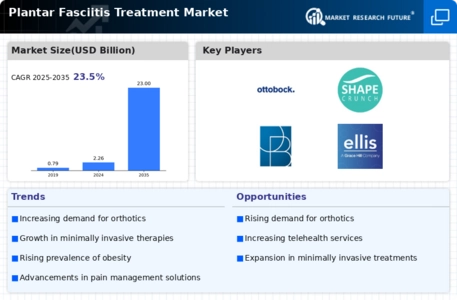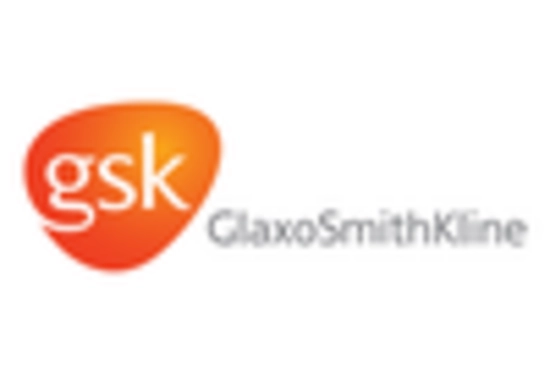Growing Awareness and Education
The increasing awareness and education surrounding plantar fasciitis significantly influence the Plantar Fasciitis Treatment Market. Public health campaigns and educational initiatives by healthcare organizations aim to inform individuals about the condition, its symptoms, and available treatment options. This heightened awareness encourages early diagnosis and intervention, which can lead to better outcomes. As more people recognize the importance of addressing foot health, the demand for various treatment modalities is expected to rise. Furthermore, healthcare providers are likely to enhance their focus on patient education, ensuring that individuals are well-informed about their treatment choices. This trend may contribute to a more proactive approach to managing plantar fasciitis, ultimately benefiting the market.
Advancements in Treatment Technologies
Technological advancements play a crucial role in shaping the Plantar Fasciitis Treatment Market. Innovations such as shockwave therapy, laser treatments, and regenerative medicine are gaining traction among healthcare professionals. These technologies offer non-invasive and effective treatment options, appealing to patients seeking alternatives to traditional methods. The integration of telemedicine also facilitates remote consultations, making it easier for patients to access care. As these technologies continue to evolve, they are expected to enhance treatment outcomes and patient satisfaction. The market is likely to witness increased investment in research and development, as companies strive to introduce cutting-edge solutions that cater to the diverse needs of individuals suffering from plantar fasciitis.
Rising Demand for Non-Invasive Treatments
The shift towards non-invasive treatment options is a significant driver in the Plantar Fasciitis Treatment Market. Patients increasingly prefer treatments that minimize recovery time and reduce the risk of complications associated with surgical procedures. Non-invasive therapies, such as physical therapy, orthotic devices, and corticosteroid injections, are gaining popularity due to their effectiveness and lower risk profiles. This trend is further supported by the growing body of evidence highlighting the success of non-invasive approaches in managing plantar fasciitis. As healthcare providers adapt to patient preferences, the market is likely to see a surge in the availability and promotion of non-invasive treatment options, catering to the needs of a diverse patient population.
Increasing Prevalence of Plantar Fasciitis
The rising incidence of plantar fasciitis is a notable driver for the Plantar Fasciitis Treatment Market. Factors such as an aging population, increased participation in sports, and sedentary lifestyles contribute to this trend. According to health statistics, approximately 10% of the population experiences plantar fasciitis at some point in their lives. This growing prevalence necessitates a variety of treatment options, including physical therapy, orthotics, and surgical interventions. As awareness of the condition increases, more individuals seek treatment, thereby expanding the market. The demand for effective solutions is likely to drive innovation and investment in the Plantar Fasciitis Treatment Market, as healthcare providers aim to address the needs of affected individuals.
Expansion of E-commerce and Telehealth Services
The expansion of e-commerce and telehealth services is transforming the Plantar Fasciitis Treatment Market. With the rise of online platforms, patients can easily access a wide range of treatment options, including orthotics and therapeutic devices, from the comfort of their homes. This convenience is particularly appealing to individuals who may have difficulty visiting healthcare facilities. Additionally, telehealth services enable patients to consult with specialists remotely, facilitating timely diagnosis and treatment recommendations. As these services continue to grow, they are likely to enhance patient engagement and adherence to treatment plans. The integration of e-commerce and telehealth into the market may lead to increased sales and improved patient outcomes, reflecting a shift in how plantar fasciitis is managed.

















Leave a Comment